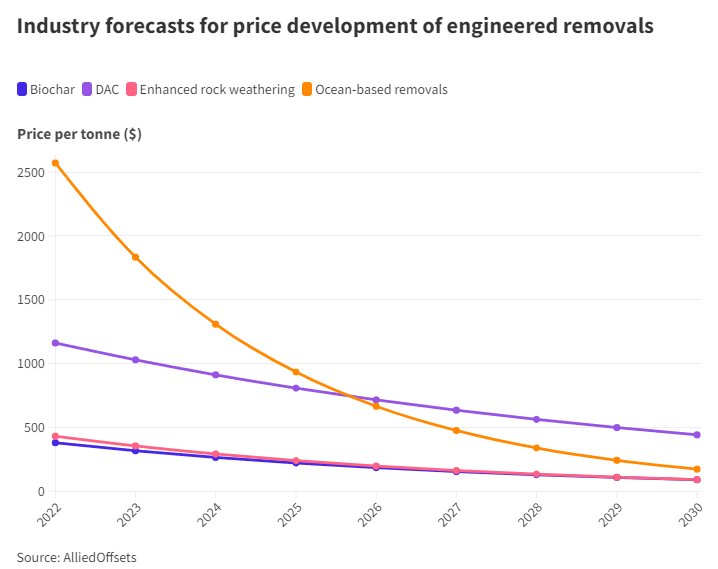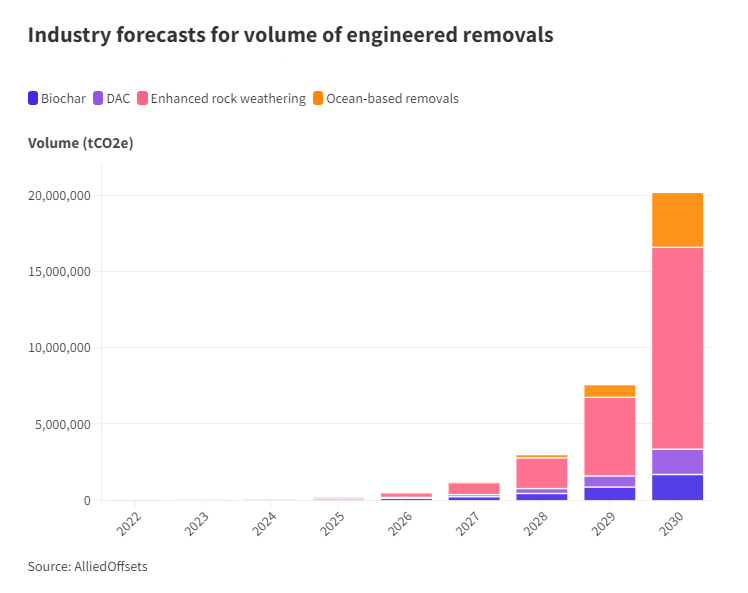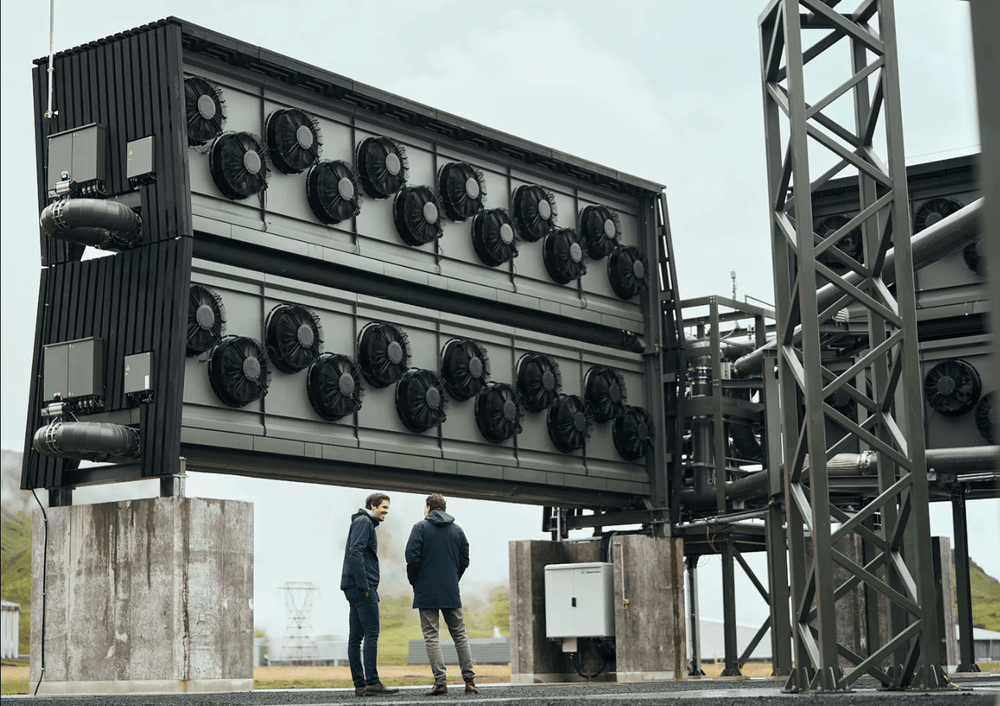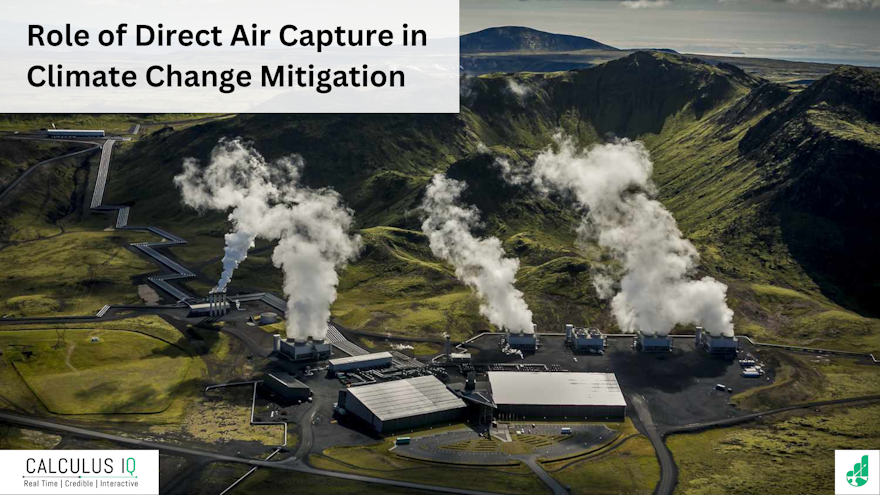Introduction
Climate change poses an imminent threat to our planet, necessitating urgent and innovative solutions. One such solution gaining prominence is Direct Air Capture (DAC), a technology designed to extract carbon dioxide (CO2) directly from the atmosphere, irrespective of its location.
Unlike traditional carbon capture methods that target emissions at specific sources, such as factories or power plants, DAC allows us to capture CO2 from the air itself. In this article, we will explore the significance of DAC in the fight against climate change, its benefits, and recent advancements in the field.
Why Direct Air Capture Matters
Direct Air Capture (DAC) plays an increasingly pivotal role in achieving net-zero emissions pathways. As emphasized by the recent International Panel on Climate Change (IPCC) report, the urgency of addressing climate change cannot be overstated. To meet the critical target of halving emissions by 2030, we must not only curb ongoing emissions but also tackle the monumental task of removing legacy CO2 emissions lingering in the atmosphere. DAC technology emerges as a potent solution to this multifaceted challenge.
DAC's core function involves capturing CO2 directly from the air and permanently sequestering it, effectively cleansing the atmosphere of this potent greenhouse gas. This process, referred to as Direct Air Capture and Storage (DAC+S), offers a promising and enduring remedy for the carbon removal dilemma.

Figure 1: How Direct Air Capture and Storage (DAC + S) works (Source: CBInsights)
In the context of net-zero aspirations, DAC serves as a linchpin. It provides a means to counter emissions that are inherently challenging to mitigate, such as those stemming from long-distance transportation and heavy industry. Moreover, DAC presents a viable solution for addressing legacy emissions, paving the way for a more sustainable future.
According to the IEA Net Zero Emissions by 2050 Scenario, DAC technologies are projected to capture over 85 million tonnes of CO2 in 2030 and a staggering 980 million tonnes by 2050. This necessitates a substantial and rapid upscaling from the current capacity of nearly 0.01 million tonnes of CO2. Currently, 18 DAC facilities operate across Canada, Europe, and the United States, with the first large-scale plant, capable of capturing up to 1 million tonnes of CO2 annually, slated for operation in the United States by the mid-2020s.
Benefits of Direct Air Capture
Direct Air Capture holds several key advantages:
Scalability and Precision: DAC technology is modular, allowing for easy scalability. Operators can accurately measure the amount of CO2 captured, providing a clear understanding of its environmental impact.
Efficient Land Usage: DAC plants require less land compared to other carbon removal techniques. For example, an Orca plant can remove 4,000 tons of CO2 annually from a 0.42-acre site, demonstrating its efficiency compared to tree planting.
Reduces Atmospheric CO2: DAC effectively decreases atmospheric CO2 levels, mitigating its greenhouse effect and potential for global warming. This is crucial as rising CO2 concentrations pose a significant climate challenge.
Wide Deployment Possibilities: DAC technology is versatile and can be deployed in various locations without the need for proximity to emissions sources. This flexibility reduces the requirement for extensive pipeline infrastructure, minimizing the risk of CO2 leaks.
Carbon Removal and Recycling: DAC can either store captured CO2 or utilize it to produce long-lived or short-lived products. Long-lived products, such as building insulation and cement, sequester carbon for an extended period. Short-lived products, including carbonated beverages and synthetic fuels, temporarily utilize captured CO2, promoting carbon recycling.
Achieves Net-Zero or Negative Emissions: DAC offers the potential for achieving net-zero or negative emissions. Synthetic fuels produced from captured CO2 can replace fossil fuels, resulting in net-zero carbon emissions. Additionally, DAC can reduce atmospheric CO2 levels when carbon is stored in geological formations or cement, leading to negative emissions by capturing and storing more CO2 than is released. This contributes to carbon removal and climate mitigation.
Challenges posed by Direct Air Capture
High Energy Consumption: DAC relies on large fans to move air through sorbent materials for CO2 capture, consuming substantial energy. Energy is also needed for material production and sorbent heating, potentially reaching 46% to 191% of global energy supply, particularly if fossil fuels power the process.
High Current Costs: As of 2021, DAC costs range from $250 to $600 per metric ton of CO2 removed. Factors affecting costs include energy sources, sorbent technology (liquid or solid), and operational scale. Future cost predictions are challenging due to various variables and limited CO2 markets, hindering cost recovery.
Environmental Risks: Transporting and injecting CO2 from DAC into geological formations carry environmental risks, such as pipeline leaks, groundwater pollution during injection, and induced seismic activity. Liquid sorbent DAC uses 1-7 metric tons of water per metric ton of CO2 captured, while solid sorbent processes require about 1.6 metric tons of water per metric ton of CO2 captured.
Enhanced Oil Recovery (EOR): DAC-derived CO2 may be used for EOR, where it's injected into oil wells to extract hard-to-reach oil. For EOR to be carbon neutral or negative, the injected CO2 must not exceed the emissions released from burning the recovered oil. If imbalanced, EOR with DAC-sourced CO2 can have a detrimental environmental impact.
Price Analysis of Direct Air Capture: A Glimpse into Future Affordability
The future price trends shed light on the potential of DAC to become a cost-efficient tool in the battle against rising CO2 levels.
Forecasts and Projections
Estimates indicate that the price-per-tonne of DAC units is poised to experience a significant decline, potentially falling below $450 by the end of the decade. This projection is based on a comprehensive data assessment from approximately 100 industry forecasts.

Figure 2: Comparative Price Forecast for DAC, Biochar, ERW, and Ocean-Based Removal (Source- Allied Offsets)
This anticipated price reduction aligns with a broader vision shared by stakeholders in the engineered removal sector. They envision DAC prices decreasing from their current levels, which hover near $1,200 per tonne, to approximately $450 per tonne by 2030. Crucially, this decline is expected to be accompanied by a substantial increase in the annual removal capacity, with over 1.5 million tonnes of CO2 equivalent (MtCO2e) targeted for removal annually by the same date.
While these projections provide hope for the future affordability of DAC, it's essential to consider varying perspectives within the DAC space. Many optimists in the field, driven by substantial investments totaling hundreds of millions of dollars, hope for DAC unit prices to reach as low as $100 per tonne. However, it's crucial to maintain a degree of skepticism, as achieving this price point may require more time than initially anticipated.
Comparative Analysis

Figure 3: Comparative Volume Forecast for DAC, Biochar, ERW, and Ocean-Based Removal (Source- Allied Offsets)
For a comparative pricing analysis alongside DAC, there are three alternative Carbon Dioxide Removal (CDR) methods that exist: ocean capture, enhanced rock weathering, and biochar,
Ocean CDR technologies foresee the steepest decline in prices, with current levels exceeding $2,500 per tonne potentially plummeting to just $172 per tonne by 2030. These firms anticipate sequestering over 3.5 MtCO2e annually by 2030.
Enhanced rock weathering, another CDR technique, is calculated to sequester approximately 13 MtCO2e by 2030. Prices are expected to gradually decrease to below $100 per tonne.
Biochar, which is expected to reach a similar scale to DAC by the end of the decade, anticipates prices dropping to below $90 per tonne from current levels around $400.
Future Prospects and Optimism
While these numbers may appear optimistic, they reflect projections from removals companies invested in the future of carbon removal. Achieving even 50% of these optimistic forecasts would significantly advance our journey toward achieving net-zero emissions by 2050.
In parallel, international bodies responsible for shaping the rules and mechanisms underpinning carbon removal projects, such as the Paris Agreement's Article 6, are actively engaged in discussions. These discussions include engineered activities like DAC, biochar, enhanced rock weathering, and ocean-based technologies, further highlighting the growing recognition of DAC as a pivotal tool in our battle against climate change.
Investment in Direct Air Capture

Image: Orca DAC plant in Hellisheiði, Iceland
Considerable private funding has been injected into the development of direct air capture technology.
Innovative Advancements: Climate tech firm Spiritus has introduced a novel DAC advancement that reduces energy costs significantly. Their Carbon Orchard machine utilizes passive air contacting to bind CO2 to sorbents without energy-intensive fans. This approach could pave the way for carbon removal at a cost below $100 per tonne.
Collaborative Efforts: German car manufacturers Porsche and Volkswagen Group, in collaboration with e-fuels company HIF Global, plan to install a DAC unit in Chile in 2024. This initiative will test DAC technology in an industrial setting, furthering its development as a sustainable carbon removal solution.
- Microsoft's Pioneering Carbon Removal Agreement: Microsoft entered into a long-term agreement with Heirloom, a Direct Air Capture company with a unique approach utilizing limestone to extract CO2 from the atmosphere. This landmark deal signifies one of the largest carbon dioxide removal contracts to date. What sets this agreement apart is its pioneering nature as one of the first bankable carbon dioxide removal agreements. This innovation introduces a vital funding mechanism for Heirloom, enabling the financing of future Direct Air Capture facilities.
Policy support for Direct Air Capture (DAC) is gaining momentum worldwide, with various countries and regions taking significant steps:
United States: In 2022, the United States demonstrated leadership by introducing substantial funding through the Inflation Reduction Act (IRA). This initiative boosted the 45Q tax credit to a remarkable USD 180 per tonne of CO2 captured when using DAC technology. Notably, the threshold for capturing as little as 1,000 tonnes of CO2 per year is eligible for this credit. The U.S. government is also investing $3.5 billion in regional DAC hubs over the next five years. This significant support is expected to catalyze private investments in DAC technology, making it a critical tool in the fight against climate change.
European Commission: The European Commission has set ambitious goals, aiming to store up to 50 million tonnes of CO2 annually by 2030, a portion of which will come from Direct Air Capture processes.
United Kingdom: In March 2023, the United Kingdom allocated a substantial budget of up to GBP 20 billion (approximately USD 25 billion) to support carbon capture, utilization, and storage (CCUS) applications. This financial commitment includes funding for DAC projects.
Canada: Canada's 2022 federal budget proposed an investment tax credit for CCUS projects scheduled between 2022 and 2030. DAC projects stand to benefit significantly from this credit, which can reach up to 60% when the captured CO2 is stored at an eligible permanent sequestration site.
Japan: In January 2023, Japan outlined a comprehensive carbon capture roadmap, setting a target to capture between 6 and 12 million tonnes of CO2 annually by 2030. This roadmap includes provisions for capturing CO2 via Direct Air Capture methods.
These policy advancements reflect the global commitment to tackling climate change by actively supporting and incentivizing the adoption of DAC technologies.
Conclusion
In the battle against climate change, the future is becoming increasingly reliant on innovative solutions, and Direct Air Capture (DAC) stands at the forefront of these transformative technologies. As we contemplate the trajectory of DAC, one thing becomes abundantly clear: it is a game-changer in our quest for a sustainable planet.
The urgency to address climate change, as emphasized by the recent IPCC report, cannot be overstated. Halving emissions by 2030 is an imperative goal, and DAC has emerged as a powerful tool in achieving this objective. By capturing CO2 directly from the atmosphere and permanently storing it, DAC tackles the daunting challenge of removing legacy emissions, a task that is indispensable in our fight against climate change.
DAC's significance in the context of net-zero emissions pathways is undeniable. Its versatility allows us to combat emissions from sectors that are challenging to decarbonize, such as long-distance transportation and heavy industry. Moreover, DAC offers a solution for addressing legacy emissions, laying the foundation for a more sustainable future.
DAC doesn't stand alone in this endeavor; it is joined by alternative Carbon Dioxide Removal (CDR) technologies like ocean capture, enhanced rock weathering, and biochar. Together, they form a powerful arsenal against rising CO2 levels, each with its unique potential for cost-effectiveness and environmental impact.
As DAC gains momentum, private investments and policy support are crucial catalysts propelling it forward. Innovative advancements, international collaborations, and groundbreaking agreements, such as Microsoft's partnership with Heirloom, are clear indicators of DAC's growing prominence.
The policy landscape is evolving as well, with countries like the United States, the European Union, the United Kingdom, Canada, and Japan committing substantial resources to support DAC adoption.
In conclusion, DAC is not merely an innovative technology; it represents hope and action in the face of a global crisis. It is a testament to human ingenuity and determination to safeguard our planet's future. As DAC continues to evolve and mature, it holds the promise of becoming a cornerstone in the foundation of a sustainable and resilient world. The future of DAC is bright, and its potential impact on climate change mitigation is profound.
![[object Object]](/lib_ubcXiSgTRmkLVyyT/k8w528b9mk1p20to.png?w=400)
